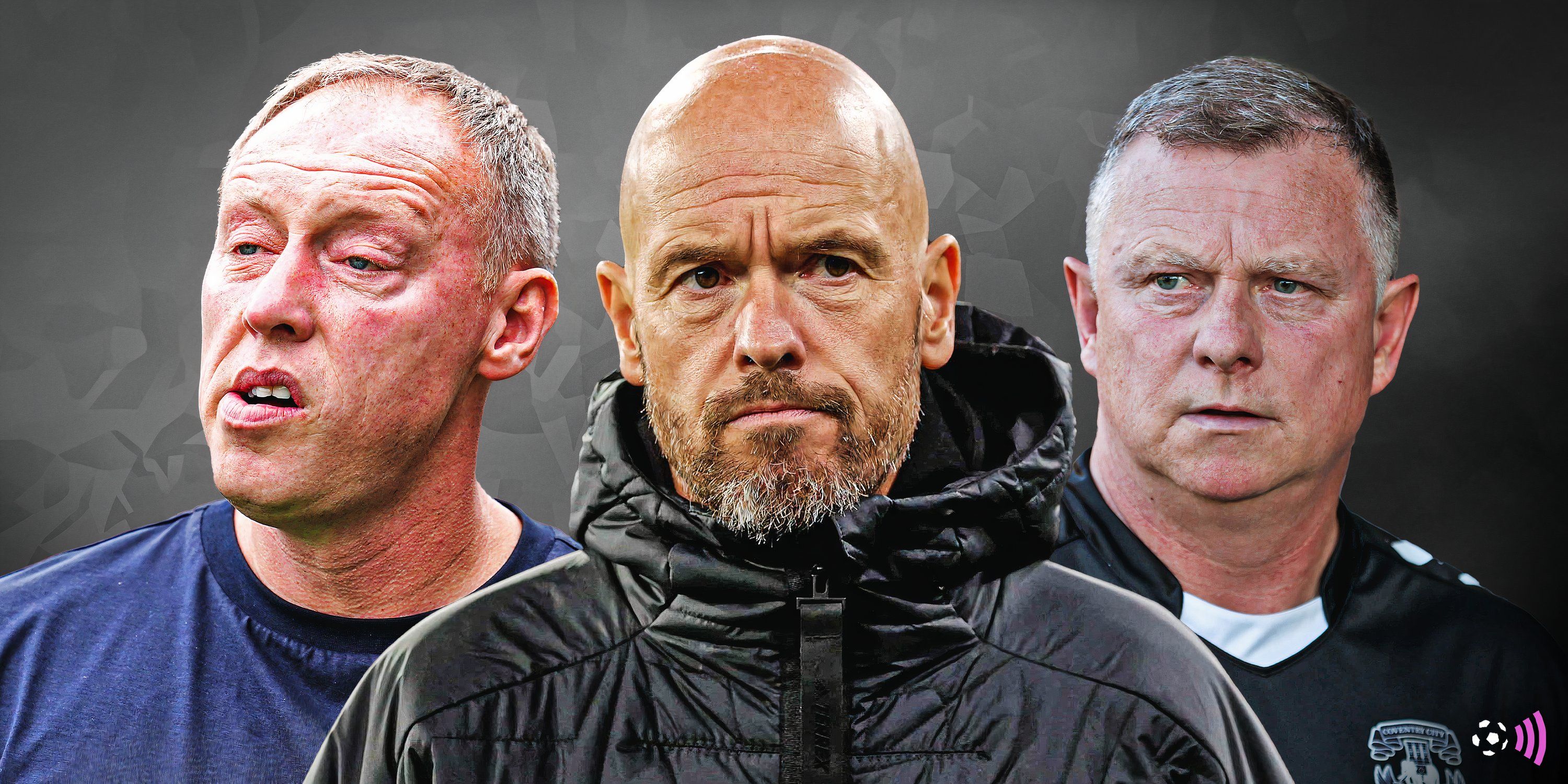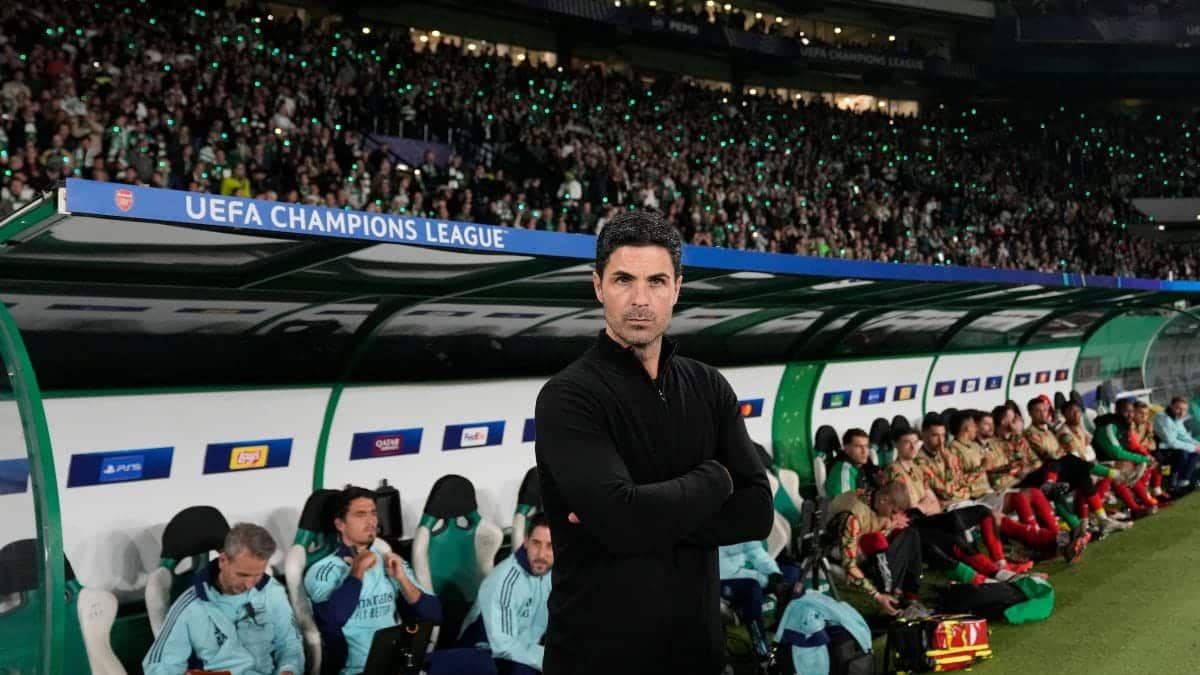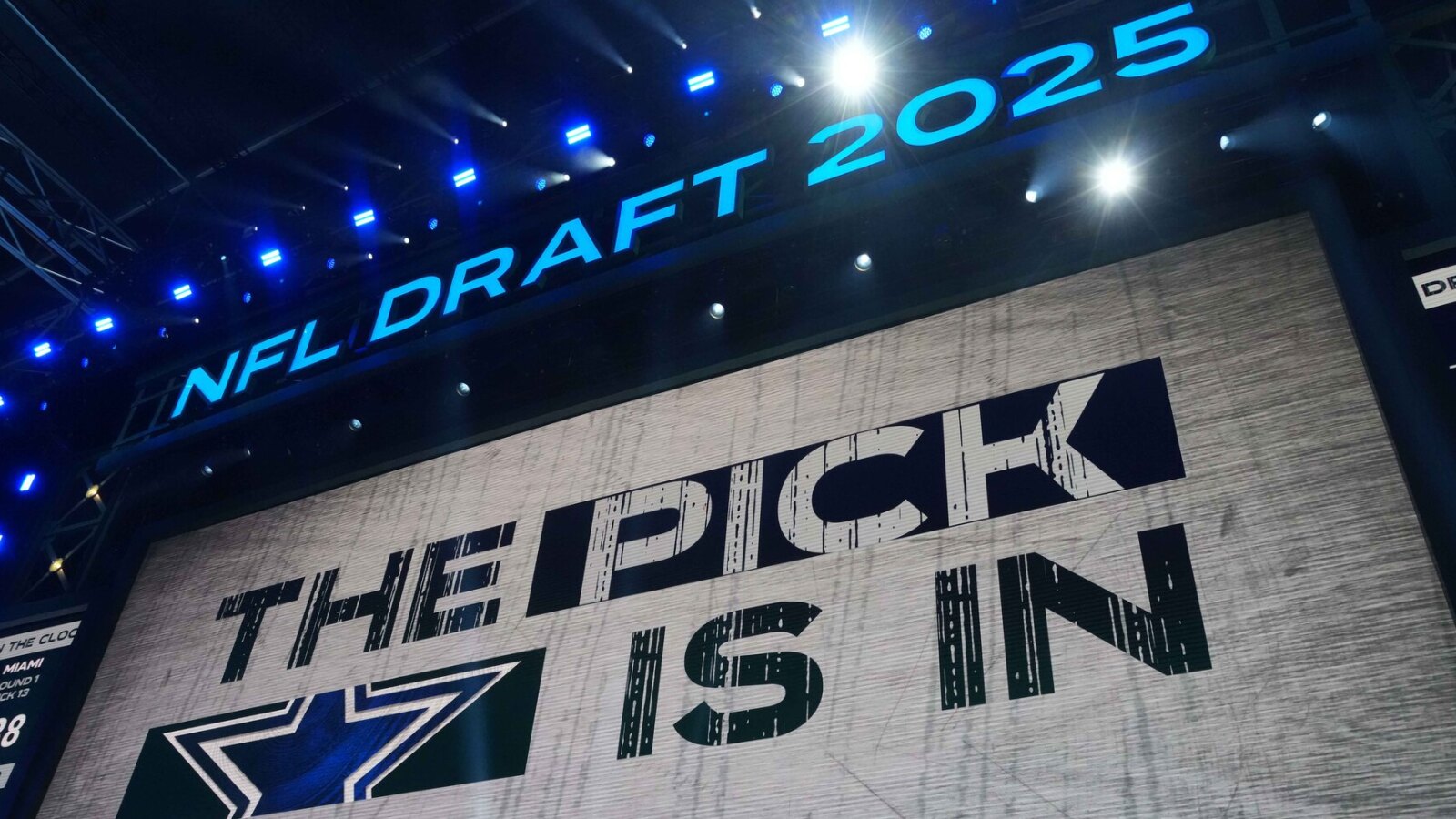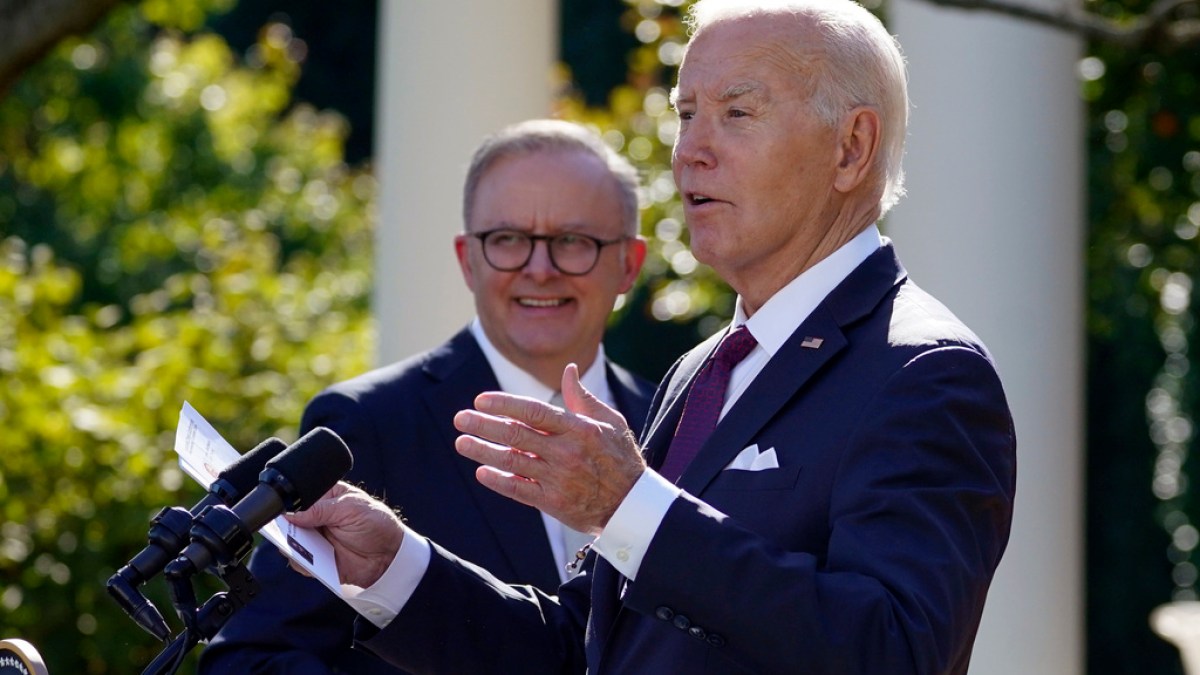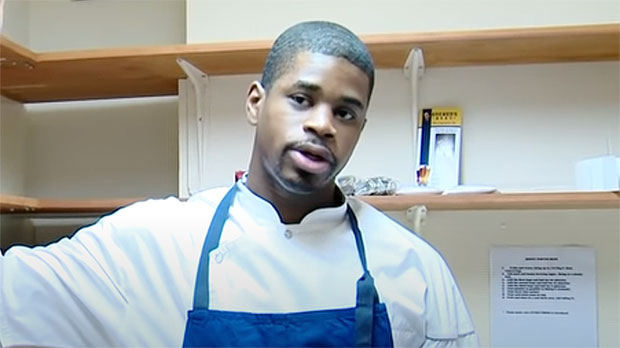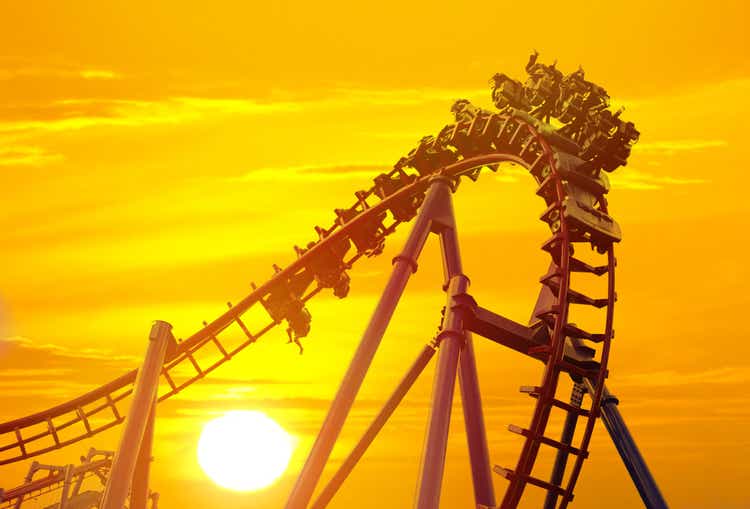In a sport with 362 teams, one would have to be a dummy to attempt any contextualization of the hierarchy of the coaches who lead the game.
Fortunately, we’re not one, but three, such dummies.
This is Year 2 of The Athletic’s Men’s Basketball Coaching Tiers. (See last year’s here.) This exercise is meant to go beyond the subjectivity of a numeric coaching ranking or the inherent callousness of the dreaded annual Hot Seat list.
Instead, we break down coaches into tiers, trying to find lines of demarcation among groups of coaches, then take those tiers to multiple authorities throughout college hoops, glean their opinions, tweak the tiers as necessary and share our findings with you.
Is it a perfect method? No.
Will you probably be angry about your favorite coach? Probably.
But we’re trying.
Criteria for inclusion span a few categories that, we think, encapsulate a picture of college basketball’s pecking order. Coaches rated here are required to fit the following qualifications:
• All coaches from the ACC, Big East, Big Ten, Big 12, Pac-12 and SEC.
• Any coach from a non-“power” conference who has led his team to the NCAA Tournament in the last three seasons.
• Any coach leading a program currently ranked in KenPom’s top 100 program rating.
• Each must have coached a full season at the Division I level.
• Each must be an active Division I coach.
It must be said, there’s no science or unassailable consistency to our grading. As in, each tier doesn’t come with benchmark qualifications. A lot of this is based on feel, opinion, familiarity and some occasional admitted recency bias.
Everything is debatable, and that’s partially the point.
We reviewed these tiers with a former player-turned-analyst, an X’s and O’s guru, multiple former coaches, a high-profile grassroots director, a current university basketball administrator and a search firm head. All were granted anonymity in exchange for their candor. We took their opinions, used them to shape some of what you see here and will share with you some of their insight.
There’s no exact definition of what makes a great coach — be it drawing up plays, in-game adjustments, scouting chops, recruiting, program leadership, player relations, etc. What matters most is arbitrary, hence our variant panel. Each agreed that the challenge of this task is the quantity, quality and variety of college basketball coaches. That, and, of course, the results.
As one industry insider put it: “We are definitely in a what-have-you-done-for-me-lately world, which is what makes this so hard. Fan bases not only don’t have a lot of patience; they don’t have a real appreciation for what people have done in the past.”
So, now that it’s clear that this is an impossible task, let’s get to these infallible, incontrovertible tiers.
Tier 1
| Coach | Team |
|---|---|
|
Tony Bennett |
|
|
Scott Drew |
|
|
Mark Few |
|
|
Dan Hurley |
|
|
Tom Izzo |
|
|
Rick Pitino |
|
|
Kelvin Sampson |
|
|
Bill Self |
There’s no debating these are the best coaches in college basketball. There’s also no guarantee such status is indefinite. The tough decision was made this year to drop a coach from a certain public land-grant research university in Lexington, Ky., from the top tier (we’ll get to him shortly), while a new name has risen into this rare air.
Multiple respondents referred to either Bill Self or Rick Pitino as the best coach in the game or said the two are worthy of being in a tier all of their own. A grassroots coach we highly respect called them “probably two of the greatest five college coaches ever.”
We considered a 1A and 1B tier distinction, placing Self and Pitino on their own. Maybe that’s warranted — these are the only active coaches with multiple national championships — but separating the two coaches with the most, um, “complicated,” resumes just didn’t sit well.
At the same time, that would be perfectly representative of our college basketball ecosystem, wouldn’t it?
Bill Self is widely regarded as the best coach in the game. (Jay Biggerstaff / USA Today)
It’s almost inarguable that Self has been the best coach at the highest level for some time. He’s widely regarded among fellow coaches as the best out of timeouts, dead balls and halftime. As one respondent who delves deep into Xs and Os and data analysis put it, Self is “the best combination of coaching and recruiting.”
As for Pitino, yeah, it’s complicated, but there’s no questioning his place in the game. Does anyone expect anything other than immediate success at St. John’s? He just went 34-6 in league play during the last two years at Iona. Now he’s stacking talent in Queens. He wins everywhere.
One former high-major coach suggested Izzo belongs in his own category on account of his 26 straight NCAA Tournament appearances. “Do you know how hard that is to do?” the coach said.
Other names here should come as little surprise. Drew, Few, Sampson and Bennett are consistently among the best, most successful program leaders out there. Bennett’s staying power here, however, is starting to come into question.
Since the COVID-19 cancellation of 2020, Virginia has won a pair of ACC championships but hasn’t won an NCAA Tournament game and missed the dance entirely in 2022. That’s a tough stretch to swallow. Three of UVA’s last four NCAA Tournament appearances ended with first-round losses to UMBC, Ohio and Furman. The other resulted in a national title. It’s all hard to square.
“I can’t believe I’m going to say this,” a player-turned-analyst said, “because he’s a really good coach, but I’m questioning Tony Bennett. … He’d be at the top of (Tier 2) for me.”
Is that fair? This is one of the great difficulties in creating a caste system like this. Single-game NCAA Tournament results carry so much weight but are inherently fitful. As one high-major administrator said: “I really struggle judging people by any one result.”
That brings us to Dan Hurley. Before March, the 50-year-old was 2-4 in NCAA Tournament games. He was most known for his last name and sideline hysterics. Then UConn beat Iona, Saint Mary’s, Arkansas, Gonzaga, Miami and San Diego State, and now, as far as this exercise goes, he’s among the best of the best.
There was much discussion. The aforementioned administrator chalked this up as recency bias and countered, “Hasn’t John Calipari accomplished significantly more than Dan Hurley?” Yes, he has. Still, in the here and now, Calipari is treading water with one NCAA win in the last three years, while Hurley has built a sustainable rocket ship at UConn.
“If Scott Drew’s there, if Kelvin Sampson’s there, if Mark Few is there,” said a former longtime high-major coach, “then Dan Hurley deserves to be there, too.”
Should one title carry so much sway? Maybe not (where is Kevin Ollie, anyway?), but we’re buying this stock as a long-term name in a game looking to replace the likes of Mike Krzyzewski, Jim Boeheim, Roy Williams, Jay Wright, Bob Huggins, etc. If he doesn’t already, it won’t be long until Hurley fits the part.
Tier 2
| Coach | Team |
|---|---|
|
Rick Barnes |
|
|
Randy Bennett |
|
|
John Calipari |
|
|
Ed Cooley |
|
|
Mick Cronin |
|
|
Brian Dutcher |
|
|
Jim Larrañaga |
|
|
Greg McDermott |
|
|
Sean Miller |
|
|
Eric Musselman |
|
|
Nate Oats |
|
|
Matt Painter |
|
|
Bruce Pearl |
|
|
Shaka Smart |
Let’s get right at it: Calipari is the only coach with a national championship who is not in Tier 1. Go mad, Big Blue Nation. Reminiscent of this exercise a year ago, when we debated and dithered about Boeheim and Huggins, slotting Calipari proved tricky. He’s won and taken three schools to a Final Four — asterisks be damned. But none of that has happened in nine long years.
Insiders argued both sides of the coin: that Kentucky has every available resource, but having every available resource makes it that much harder to realize outsized expectations; that Cal has been dogged for being a bad coach unfairly but sometimes schematically he’s not a great coach. One source called watching Kentucky last year “brutal,” while another argued, “he probably gets hated on too much.”
The bottom line, as Cats fans know all too well, is there has been nearly a decade’s worth of disappointment — of stacked rosters moving on to the draft, but not moving on in the NCAA Tournament.
“With the talent they have, it’s not good enough for Kentucky, and it’s not good enough for him,” an analyst said.
The good news for Calipari: Nothing is forever, as the transiency of Tier 2 this year proves. Three coaches checked out, and six moved in — Shaka Smart, Greg McDermott, Nate Oats, Brian Dutcher, Jim Larrañaga and Randy Bennett.
That the new entrants run from 46 (Smart) to 74 (Larrañaga) says pretty much everything about how this thing works. Adjusting to the evolution of the game, remaining relevant at various levels of programs and sustaining success are the secret sauce. Smart won at VCU and Texas, and now he has Marquette poised to challenge for a national title.
McDermott, whom one analyst called “maybe the best offensive coach in the country,” steadily and consistently built has Creighton into a national program. He and Dutcher probably had their best squads in the COVID-19 canceled 2020 season, with the Bluejays winning the Big East and San Diego State sitting on a 30-2 record. Oats won at Buffalo and is now winning at Alabama, where fans only recently discovered the basketball arena. As for Bennett, he hasn’t had a losing season since his first year at Saint Mary’s. Were he not existing in the immense shadow of Gonzaga, who knows what his program could achieve?
No one proves how to make success last better than Larrañaga. He has taken two non-traditional powers (George Mason and Miami) to the Final Four, while unabashedly embracing the sport’s new wave.
“Talk about a guy in his 70s who changed his whole philosophy,” one grassroots coach said. “He didn’t hesitate jumping on the NIL.”
A final note on the transiency of Tier 2: moving up and on is also a possibility, and if anyone is poised for the jump, it’s Matt Painter. Plenty of insiders thought he should be in Tier 1 already, citing his playcalling acumen and ability to identify and develop players who suit Purdue.
“In the sense of longevity, consistency, reinvention, winning with lesser talent, development,’’ one former coach said. “Outside of that recency bias of the game last year, I just think he’s that good.”
The catch, of course, is how to measure March success — or in this case, lack of success. If Calipari is held to that standard, Painter probably needs to be, too.
“I love Paint, so my instinct is to say he’s among the best coaches in the game,” an administrative source said. “And he is, but this is probably the right spot for him. Results-wise, there are a lot of similarities between him and (Xavier’s) Sean Miller, and there have been some very average years in there.”
Tier 3
| Coach | Team |
|---|---|
|
Dana Altman |
|
|
Chris Beard |
|
|
John Becker |
|
|
Hubert Davis |
|
|
Darian DeVries |
|
|
Jamie Dixon |
|
|
Andy Enfield |
|
|
Greg Gard |
|
|
Dennis Gates |
|
|
Leonard Hamilton |
|
|
Chris Holtmann |
|
|
James Jones |
|
|
Matt Langel |
|
|
Tommy Lloyd |
|
|
Dusty May |
|
|
Fran McCaffery |
|
|
Grant McCasland |
|
|
Ritchie McKay |
|
|
Niko Medved |
|
|
TJ Otzelberger |
|
|
Steve Pikiell |
|
|
Mike Rhoades |
|
|
Bob Richey |
|
|
Jon Scheyer |
|
|
Jerome Tang |
|
|
Brad Underwood |
|
|
Kevin Willard |
|
|
Buzz Williams |
|
|
Mike Young |
Large group. A wide array of circumstances. A wide array of conclusions.
Such as: What in the world do you do with Chris Beard?
Career .701 win percentage, a national championship game appearance, assembled a Texas roster that won 29 games and lost in the Elite Eight last season.
“He’s just too good,” an industry source said. “He’s got too many answers for too many things.”
Beard also lost his dream job after an arrest following a domestic incident, after which Ole Miss threw him a lifeline.
“He gets the most out of his players, wherever he is,” the analyst said. “But it’s fair to ask if the other stuff counts. If it’s strictly basketball, he’s Tier 2. With the other stuff, that matters because it affects doing your job.”
And then there’s Hubert Davis. One season, it’s a run to the national championship game. The next, it’s one of the most disappointing seasons in recent men’s college basketball history. Add to that the concern that he has strayed too far from what made North Carolina great, at least according to those watching from afar.
“There’s really not similarities to the old Carolina Way, with the way that they play,” an industry source said.
Davis has five-star guard Elliot Cadeau on campus, plus a 2024 recruiting class currently featuring two national top-10 prospects.
“He’s a tricky one,” the former coach said. “He has a lot to prove still. Can he run the type of program he’s been given? I think he can, but he hasn’t yet. Not consistently. And I’m not talking about getting to the Final Four. I’m talking about making the (NCAA) Tournament.”

Year 3 will be an important one for Hubert Davis. (Grant Halverson / Getty Images)
Some of these coaches — Texas A&M’s Buzz Williams and Maryland’s Kevin Willard, in particular — were deemed to be on the cusp of seasons that demand reassessment in a good way. Some of them — the Big Ten trio of Brad Underwood, Greg Gard and Chris Holtmann — could use a jolt of high-level success in March, at least according to the sources The Athletic spoke to for feedback. And there was some mystification regarding one coach in particular.
“It’s amazing to me that nobody’s hired John Becker,” the grassroots coach said. “Just literally amazing.”
Vermont’s coach has a .712 win percentage in 12 seasons and six straight regular-season conference titles. Becker is almost certainly at the point in his career where he would take on a challenge at a higher level. But that call has yet to come.
“He’s done an incredible job,” the administrative source said. “The resources they have at Vermont relative to the rest of the league are good but still lacking at the same time. He really struggles to get (quality) games scheduled based on their region and their sustained success. But they just win over and over and over again.”
Tier 4
| Coach | Team |
|---|---|
|
Amir Abdur-Rahim |
|
|
Steve Alford |
|
|
Kenny Blakeney |
|
|
Tad Boyle |
|
|
Mike Boynton |
|
|
Bryce Drew |
|
|
Steve Forbes |
|
|
Joe Golding |
|
|
Anthony Grant |
|
|
Penny Hardaway |
|
|
Ray Harper |
|
|
Eric Henderson |
|
|
Shaheen Holloway |
|
|
Juwan Howard |
|
|
Chris Jans |
|
|
Robert Jones |
|
|
Pat Kelsey |
|
|
Andy Kennedy |
|
|
Eric Konkol |
|
|
Thad Matta |
|
|
Matt McMahon |
|
|
Wes Miller |
|
|
Porter Moser |
|
|
Ryan Odom |
|
|
Joe Pasternack |
|
|
Mark Pope |
|
|
Leon Rice |
|
|
Mark Schmidt |
|
|
Rob Senderoff |
|
|
Micah Shrewsberry |
|
|
Danny Sprinkle |
|
|
Jerry Stackhouse |
|
|
Damon Stoudamire |
|
|
Rodney Terry |
|
|
Mike Woodson |
Now it gets interesting. Or complicated. Here you have 35 coaches who could move up or down a tier and probably not draw too much pushback.
Perfect examples — Porter Moser and Juwan Howard. It wasn’t long ago both were being hailed as rising stocks anyone would buy. Moser was mentioned for every opening in college basketball after vaulting Loyola Chicago to national prominence. Howard was mentioned for every NBA opening after making major waves at Michigan.
Now? Moser is 34–33 in two years at Oklahoma, trying to find upward momentum in college basketball’s most brutal league. A 5-13 Big 12 mark in Year 2 of his six-year deal means a lot is riding on Year 3.
As for Howard.
“You had two lotto picks and Hunter Dickinson and couldn’t win? That’s a problem,” the analyst said of last year’s Michigan team. “I don’t think there’s been a lot of impressive X-and-O going on the last couple of years, and the end-of-game situations have been really poor.”
Multiple respondents cited the oft-repeated line that Howard only won with John Beilein’s players. That’s not entirely accurate. Howard’s best team was a 2021 group that went 23-5 and reached the Elite Eight. Four of that team’s top six players (Franz Wagner, Dickinson, Mike Smith and Chaundee Brown) never played for Beilein. That said, things do need to turn around in Ann Arbor. Last season was bad, and judging by projections, this year could be worse.
Moving up from Tier 5 are Jerry Stackhouse, Bryce Drew, Pat Kelsey, Ryan Odom, Joe Pasternack and Andy Kennedy. Micah Shrewsberry, meanwhile, after taking Penn State to the NCAA Tournament with a team built from spare portal parts, moves up two spots. No one in this entire exercise received as much universal praise as the new Notre Dame coach.
“I was surprised Micah is not higher,” the grassroots coach said. “Micah, of anybody in Tier 4, could be in Tier 2 in the next year or two and Tier 1 for the next 15 years.”
We received some pushback on Leon Rice. A few insiders noted that it’s absurd to produce his level of success at Boise State. One former coach said, “You could put Leon Rice in Tier 3, and nobody that follows basketball would doubt that.”
Both Mike Boynton and Andy Enfield were highlighted as coaches who do good work that gets easily overlooked.
It’s sort of forgotten now that Enfield did the impossible at Florida Gulf Coast and was considered a potential one-hit wonder when landing at USC. Did anyone envision him lasting 10 years there and winning at a .616 clip?
And Boynton, at 41, remains a coach many are high on, despite some trying times at Oklahoma State, much of which was out of his control.
“He’s had to handle an NCAA postseason ban that was wrongly administered,” a high-major administrator told us. “But his teams have been tough as nails. This is a guy I buy long-term. Every time I talk to him, I leave more impressed by him.”
Tier 5
| Coach | Team |
|---|---|
|
Tobin Anderson |
|
|
Jeff Boals |
|
|
Jeff Capel |
|
|
Speedy Claxton |
|
|
Chris Collins |
|
|
Johnny Dawkins |
|
|
Kim English |
|
|
Todd Golden |
|
|
Earl Grant |
|
|
John Groce |
|
|
Mitch Henderson |
|
|
Darrin Horn |
|
|
Martin Ingelsby |
|
|
Ben Jacobson |
|
|
Kevin Keatts |
|
|
Rob Lanier |
|
|
Shantay Legans |
|
|
Jeff Linder |
|
|
Steve Lutz |
|
|
Bob Marlin |
|
|
Paul Mills |
|
|
Chris Mooney |
|
|
Mike Morrell |
|
|
Scott Nagy |
|
|
Kyle Neptune |
|
|
Lamont Paris |
|
|
Richard Pitino |
|
|
Craig Smith |
|
|
Kyle Smith |
|
|
Preston Spradlin |
|
|
Drew Valentine |
|
|
Mike White |
It’s crowded in the middle, which makes sense, but there is a legitimate difference between how coaches got here. Some are on the rise like Kim English. After just two years at George Mason, he jumped directly to Providence — and straight to Tier 5.
“I don’t know if it’s confidence or if it’s arrogance, but he is unafraid,” one industry source said. “And in that league, you gotta be that way. … I think he’s going to be toe-to-toe with those guys. I just respect him as a coach. There’s people that don’t like him, and I think that’s because he’s tough and there’s a confidence there. And there’s people that love him, and I think it’s because he’s tough, and there’s a confidence there. So is it confidence? Arrogance? Either way, it’s working.”
People feel similarly about Tobin Anderson. From the outside, it might look like he’s simply catapulted himself off of one win — Fairleigh Dickinson’s epic 16-over-1 NCAA Tournament upset of Purdue — but people inside basketball point to his longevity outside of Division I. Anderson went 209-62 at St. Thomas Aquinas, reaching three Sweet 16s and one Elite Eight. Experts expect more of the same at Iona.
“He has a unique style,’’ one analyst said. “Press all game, motion-centric offense. It’s a style shock when you play them.”
Mitch Henderson earns similar praise at Princeton. The former Tigers player does not run Pete Carril’s fabled “Princeton offense” to a tee, but his variation works well.
“I like Mitch Henderson a lot,” one insider said. “He’s got a very unique style of play, he’s got a very unique way about him. He probably doesn’t get enough credit because he really wants to be at Princeton.”

This season should tell us whether Villanova’s Kyle Neptune is ready for the big time. (Kyle Ross / USA Today)
Mixed in, however, with the coaches on the rise are the Tier 5 coaches who have now or have had Power 6 jobs and are either climbing the ladder for the first time or on their second round. Kyle Neptune fits the first group. The Villanova coach got the keys to the sport’s sweetest ride, but his team a year ago was beset by injuries to key players — Justin Moore and Cam Whitmore, namely — and earned something of a mulligan in Year 1. But now the Wildcats are healthy and have tapped into the transfer portal. The Villanova coach isn’t supposed to be in Tier 5.
“They’re not going to give you a bunch of time to be good at Villanova,” one grassroots coach said simply.
Then again, no one thought Pitt would give Jeff Capel much more time, either. Instead, athletic director Heather Lyke’s long-game plan paid off, as the Panthers doubled their win total and went back to the tourney last year. That moved Capel from Tier 6 to 5. He might not last long there.
Sources don’t think Richard Pitino is long for New Mexico. In two seasons, he has turned the program into a 22-game winner, jumpstarting the Lobos and restarting his career.
“He’s quietly done a really nice job,” one analyst said. “I wouldn’t be surprised if he ends up back at a high-major soon.”
Perhaps the trickiest guy to figure out is Chris Collins. He jumped up a tier after taking Northwestern to the NCAA Tournament for the second time in program history. Sources laud his ability to do the darned near impossible in Evanston and his decision to surround himself with savvy coaches. More than one industry insider cited the addition of Chris Lowery to run the defense as a difference-maker for the Wildcats, who jumped from 73 to 22 in adjusted defense per KenPom with Lowery on the bench. But the question for Collins isn’t about what he has done, it’s about what more can he do.
“You were right to move him up one, but I don’t think he’ll ever go higher than this in that job,” the administrative source said. “It’s so hard. Think about it. He’s gotten Northwestern to the NCAA Tournament more than the rest of the planet.”
Tier 6
| Coach | Team |
|---|---|
|
Griff Aldrich |
|
|
Brad Brownell |
|
|
Fred Hoiberg |
|
|
Bobby Hurley |
|
|
Johnny Jones |
|
|
Dustin Kerns |
|
|
Brad Korn |
|
|
Kevin Kruger |
|
|
Mark Madsen |
|
|
Tony Stubblefield |
|
|
Dedrique Taylor |
It’s a bit of a limbo level, with some of the coaches doing enough to avoid any true employment peril while also not exactly filling the fan base with rampant optimism.
Bobby Hurley, for example, is 141-113 overall at Arizona State and just received a two-year contract extension through 2026 after leading the Sun Devils back to the NCAA Tournament.
“That’s a really hard job,” the former coach said. “I don’t know why it is, but it is. Think of all the head coaches who have gone through there. Bill Frieder left Michigan because he thought that was going to be a good job. Herb Sendek went there. That to me is a very hard job.’’
If there’s true upward mobility in the group, it manifests in Appalachian State’s Dustin Kerns. The 70-58 record in Boone maybe isn’t eye-catching … but how Kerns operates is, at least to a couple of sources The Athletic contacted.
“It’s not exactly a great basketball job,” the grassroots coach said. “And he’s been to the NCAA Tournament, and he’s recruited well.”
Said an industry source: “You could easily put him in Tier 5. Innovative system. Very good situationally. Makes players better. It’s guys like that, that are going to be hurt as it moves on down the line — the better he makes his players, the more they’re going to leave. But he’s one jump away from a higher league.”
Tier 7
| Coach | Team |
|---|---|
|
Dan Engelstadt |
|
|
Jerod Haase |
|
|
Mike Hopkins |
|
|
Ben Johnson |
|
|
Kenny Payne |
|
|
Wayne Tinkle |
“So these are the guys basically getting fired next year, right?” That’s how one industry insider categorized Tier 7, and well, yes. That’s where we are, with the coaches who desperately need to find some semblance of success to stay employed.
The question here isn’t if it’s bad — that’s obvious. It’s why. In some cases — Jerrod Haase at Stanford, Wayne Tinkle at Oregon State — the jobs are not easy. Then again, it’s not going to get easier for Haase if he’s around when the Cardinal move to the ACC. Tinkle did make the bubble Elite Eight in 2021 — “It’s crazy how quickly perceptions and narratives can change,” one administrative source said. Then again, he followed that up with three- and 11-win seasons.
Mike Hopkins and Kenny Payne have, on the other hand, been gifted strong programs with a history of success. Hopkins, the former longtime Boeheim assistant, started hot by winning Pac-12 Coach of the Year honors his first two seasons and winning the league regular-season title in his second season. That year, however, was the last the Huskies made it to the NCAA Tournament, a run of diminishing returns. Hopkins’ staunch commitment to his old boss’ defense seems to be part of the problem.
“I’ve heard a couple coaches make fun of that zone they play,” one analyst said. “It’s just so hard to play 2-3 with the way 3-point shooting is in this day and age.”
With a new athletic director in town, Hopkins certainly needs to get things right in a hurry.
As does Payne. It may seem premature to turn on the flames under Payne’s seat. He’s only in his second season at Louisville and inherited a team that has been through a thing or two. Except …
“I had one of their games, and I think it was the worst shootaround I’ve ever witnessed,” one analyst said. “It was shocking. Messing up the scouting report, guys running into each other, not knowing what they were doing on drills. It was a disaster.”
The Cardinals lost by an average of 11.9 points per game, including by plus-20 six times and more than 30 twice. The entire season was an abject disaster.
(Illustration: Sean Reilly / The Athletic; Photos of Greg McDermott, John Calipari and Rick Pitino: Justin Casterline, Porter Binks and Rob Carr / Getty Images)



